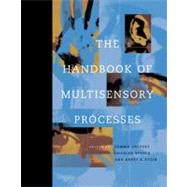The Handbook of Multisensory Processes
, by Gemma A. Calvert, Charles Spence and Barry E. Stein (Eds.)- ISBN: 9780262033213 | 0262033216
- Cover: Hardcover
- Copyright: 6/1/2004
This landmark reference work brings together for the first time in one volume the most recent research from different areas of the emerging field of multisensory integration. After many years of using a modality-specific "sense-by-sense" approach, researchers across different disciplines in neuroscience and psychology now recognize that perception is fundamentally a multisensory experience. To understand how the brain synthesizes information from the different senses, we must study not only how information from each sensory modality is decoded but also how this information interacts with the sensory processing taking place within other sensory channels. The findings cited in The Handbook of Multisensory Processessuggest that there are broad underlying principles that govern this interaction, regardless of the specific senses involved. The book is organized thematically into eight sections; each of the 55 chapters presents a state-of-the-art review of its topic by leading researchers in the field. The key themes addressed include multisensory contributions to perception in humans; whether the sensory integration involved in speech perception is fundamentally different from other kinds of multisensory integration; multisensory processing in the midbrain and cortex in model species, including rat, cat, and monkey; behavioral consequences of multisensory integration; modern neuroimaging techniques, including EEG, PET, and fMRI, now being used to reveal the many sites of multisensory processing in the brain; multisensory processes that require postnatal sensory experience to emerge, with examples from multiple species; brain specialization and possible equivalence of brain regions; and clinical studies of such breakdowns of normal sensory integration as brain damage and synesthesia.







